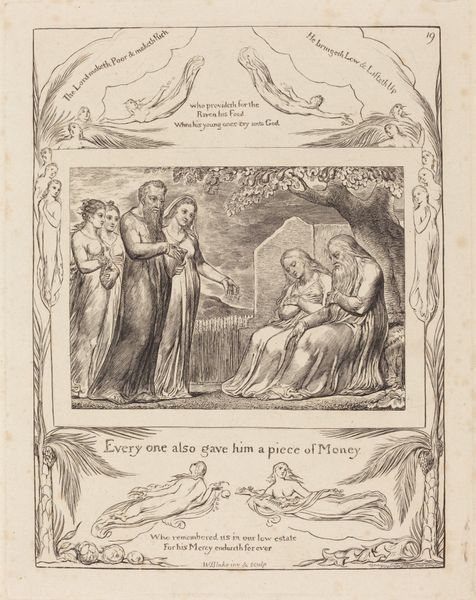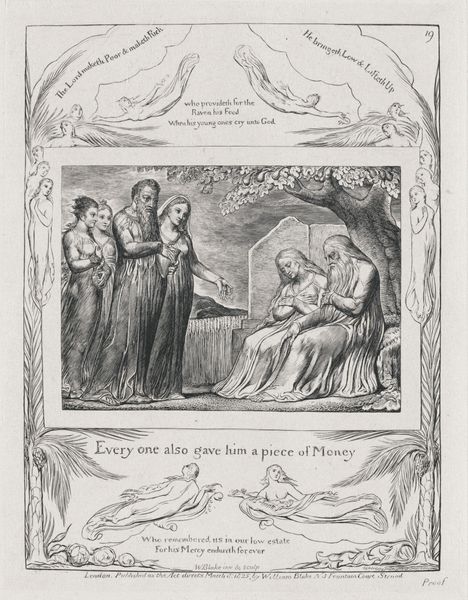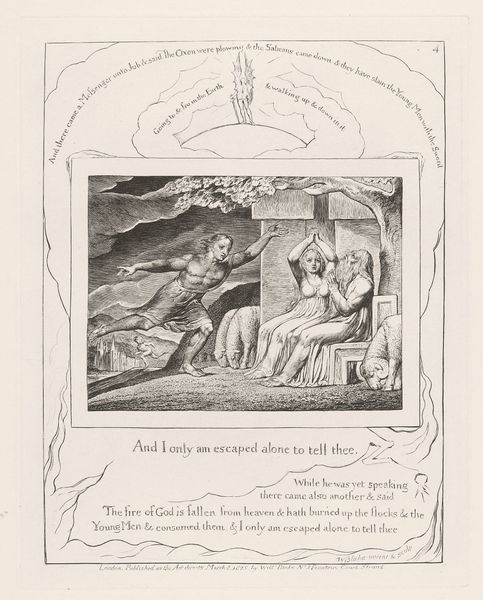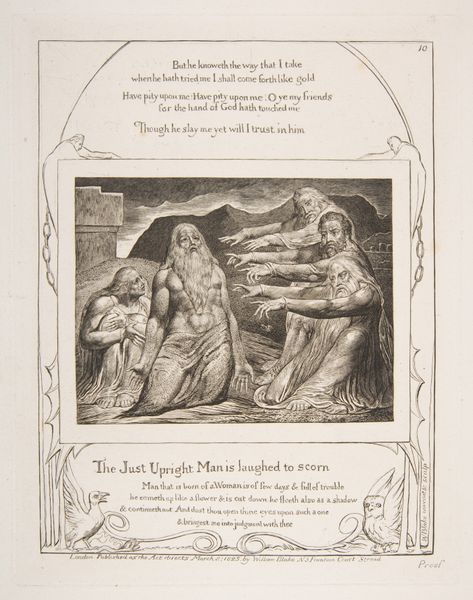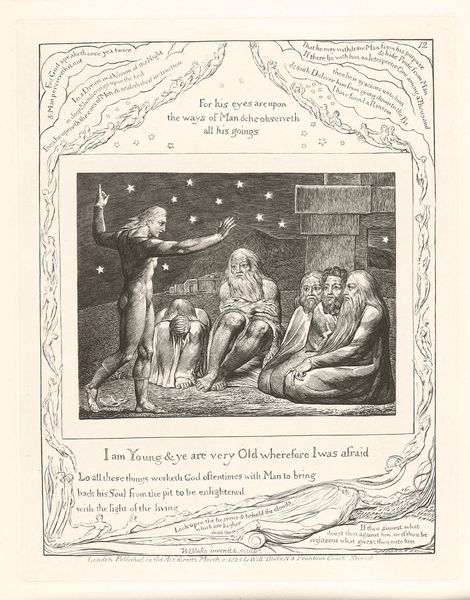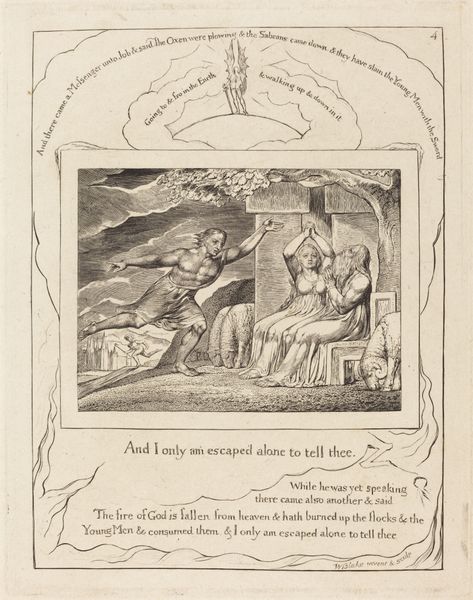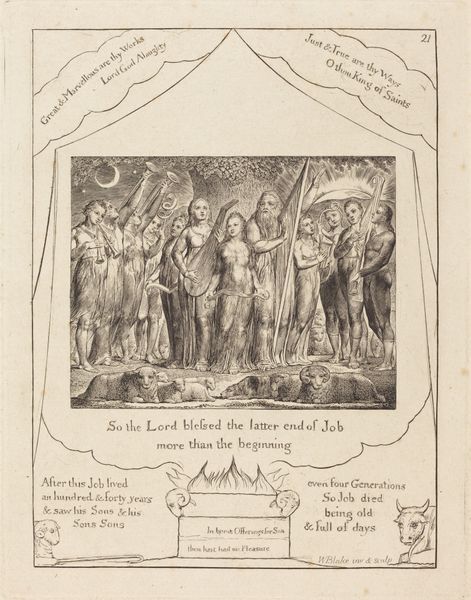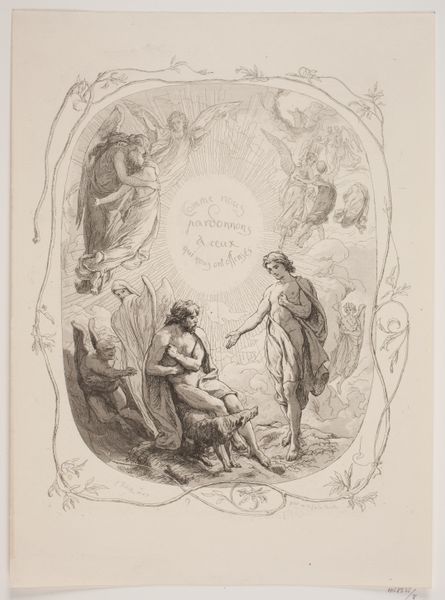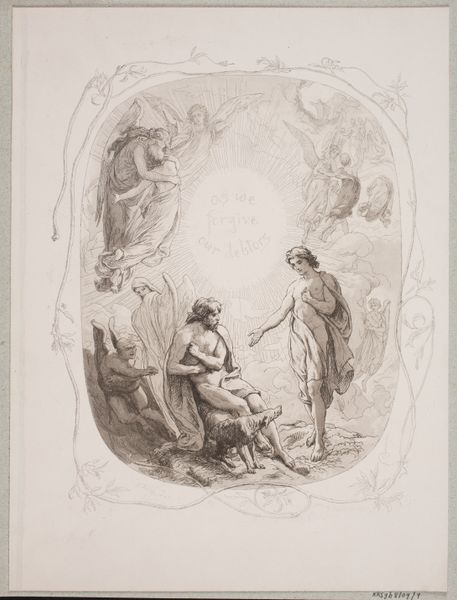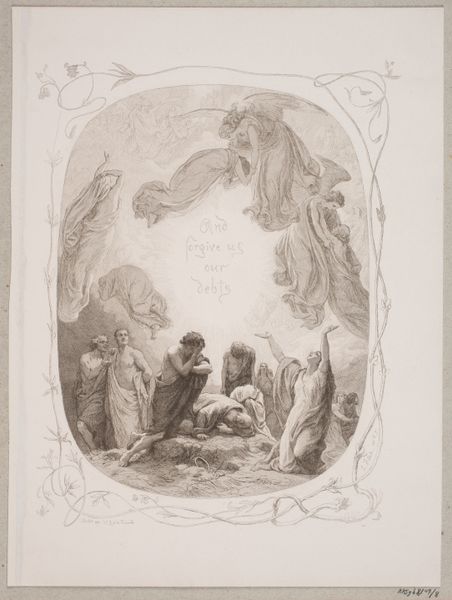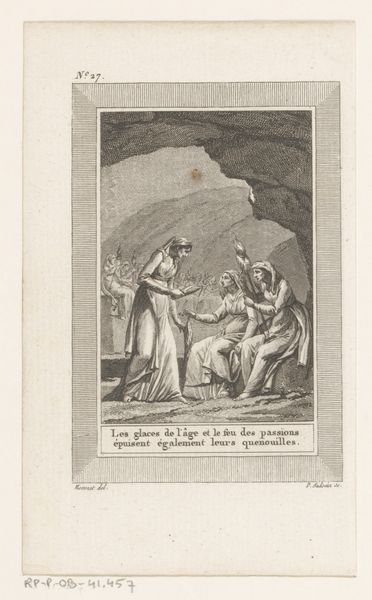
Dimensions: 8 7/16 x 6 5/8 in. (21.43 x 16.83 cm) (sheet)
Copyright: Public Domain
This engraving by William Blake was made in London in 1827 and is a visual interpretation of a passage from the Book of Job. It speaks of charity, and the relationship between wealth, poverty and faith. Blake was deeply invested in the social and political upheavals of his time. This image reflects the religious and social debates around poverty and wealth in 19th-century England. Notice how Blake juxtaposes the wealthy figures offering money with the suffering of Job and his family. Are they truly helping, or merely performing charity for their own benefit? The text framing the image adds layers of complexity, drawing on biblical themes of divine providence and mercy. Blake subtly critiques the institutions of power, hinting at the hypocrisy and social inequalities prevalent in his society. To fully understand this print, we can look at religious texts, social commentaries from the period, and Blake's other works. By examining these resources, we gain insight into the profound social and institutional critique embedded in Blake's art.
Comments
minneapolisinstituteofart almost 2 years ago
⋮
As Job lost virtue by giving to a beggar, he now gains it by receiving from his friends. This is true charity springing from personal sympathy. One woman even offers Job her gold earring (Job xlii: II). The heavy cross over Job's head is now broken. Prosperity is shown by the fig tree bearing fruit and the standing wheat. Angels crowd round the margins of the designs with palms of victory, for Job has conquered his pride at last; and below are the roses and lilies of material and spiritual beauty. "The thankful recipient bears a plentiful harvest." (51st proverb of Hell.) The pioneering Blake scholar Joseph Wicksteed indicates that this illustration is a tender and passionate acknowledgment of his indebtedness to his pupil and patron John Linnell and his wife.
Join the conversation
Join millions of artists and users on Artera today and experience the ultimate creative platform.
